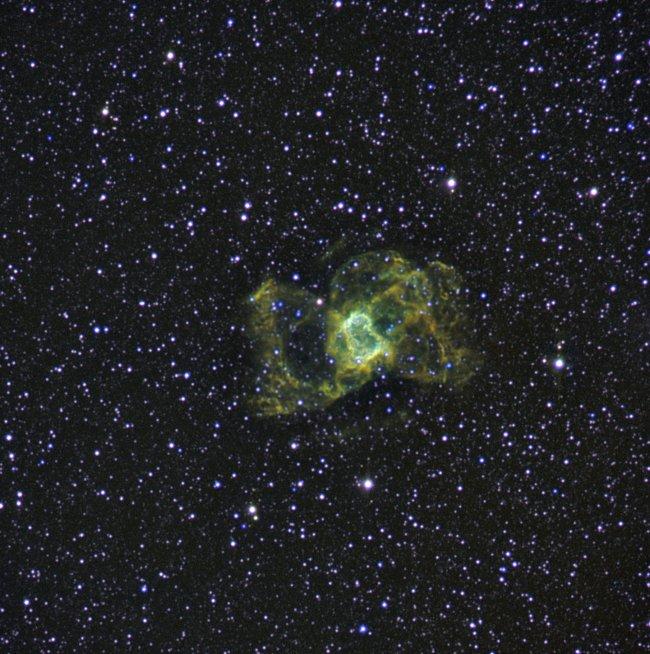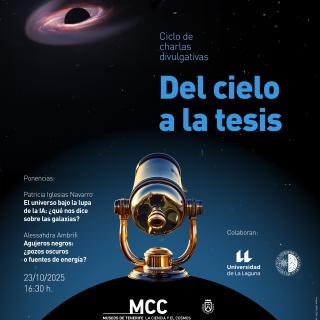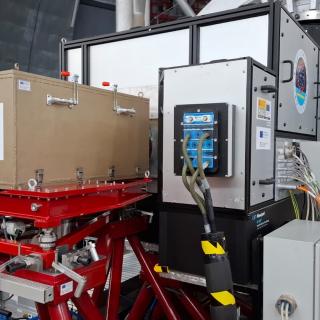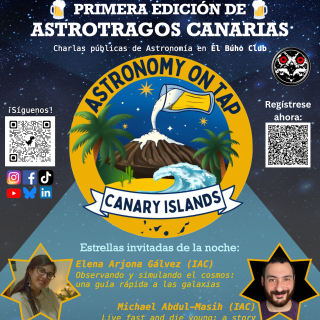A theoretical study by researchers at the Instituto de Astrofísica de Canarias, (IAC) confirms that the less massive planetary nebulae produce oxygen, and that this could influence models of the chemical evolution of galaxies
Planetary nebulae are the gaseous remnants of low and intermediate mass stars, similar to our Sun, after they have used up their original hydrogen fuel, and have been transformed into red giants (technically these stars are on the “asymptotic giant branch of the HR diagram of stellar classification, and are termed AGB stars). The outer layers of AGB stars are expelled into the interstellar medium, causing the loss of 80% of the original mass of the star. Following this, the central nucleus of the star becomes a white dwarf, surrounded by a spectacular cloud of the expelled gas and dust, which forms a “planetary nebula”. These stars make a basic contribution to the progressive chemical enrichment of the interstellar medium, from which new stars and planets are formed, and to the overall chemical evolution of galaxies.
Recently observations had shown that planetary nebulae with low mass (between one and three times the mass of the Sun) were rich in oxygen, but the standard theoretical models did not predict this. However now the researchers have managed to explain this phenomenon for the first time using theoretical models of nucleosynthesis (production of chemical elements in the interiors of stars) which include convective processes, (which transport chemical elements created in the interior to the surface of the star) more efficient than in the standard models. The journal Monthly Notices of the Royal Astronomical Society has recently published these results.
This discovery calls into question the traditional role of planetary nebulae as indicators of metallicity, which is the term used to cover the abundance of the elements which are heavier than hydrogen and helium initially present in the universe, because now it has been established theoretically that they are intrinsically rich in oxygen. The abundance of oxygen has been used historically to study the differences in the metallicity of our Galaxy and those of other nearby galaxies. In its place, according to the astrophysicists, other elements which are not so affected by stellar evolution, such as argon or chlorine should be used as indicators of metallicity.
The main processes of element production take place in the final phase of a red giant or an AGB star, just before it becomes a planetary nebula. “The planetary nebulae show us the resulting effect of this phase, and so it is important to use their chemical composition to advance our present theoretical understanding of nucleosynthesis in AGB stars” says Domingo Anibal Hernández, who is the principal investigator on this study. This intrinsic production of oxygen during the late phases of low mass stars, which are the commonest stars in almost all galaxies, needs to be taken into account in the detailed models of the chemical evolution of our Milky Way and of other galaxies, to understand where most of the oxygen comes from. Other types of stars, such as supernovae, which had been considered more important until now, may play a lesser role. “ In future”, continues the astrophysicist “ it will be necessary to use the predictions of these new models to analyze in detail the effect of these oxygen producing stars on the models of chemical evolution of galaxies, in fact they may have an important effect on the characteristic time scales for the formation of the majority of the stars in galaxies”.
Article: “Probing O-enrichment in C-rich dust planetary nebulae”, by D. A. García-Hernández (IAC-ULL), P. Ventura (Osservatorio Astronomico di Roma), G. Delgado-Inglada (Universidad Nacional Autónoma de México), F. Dell'Agli (Osservatorio Astronomico di Roma-Univesità di Roma), M. Di Criscienzo (IAC), A. Yagüe (Osservatorio Astronomico di Roma-ULL-IAC), Monthly Notices of the Royal Astronomical Society Letters. Letters: 2016 458 (1):118-122. Oxford University Press.
http://mnrasl.oxfordjournals.org/lookup/doi/10.1093/mnrasl/slw029
Contact:
Aníbal García: agarcia [at] iac.es



